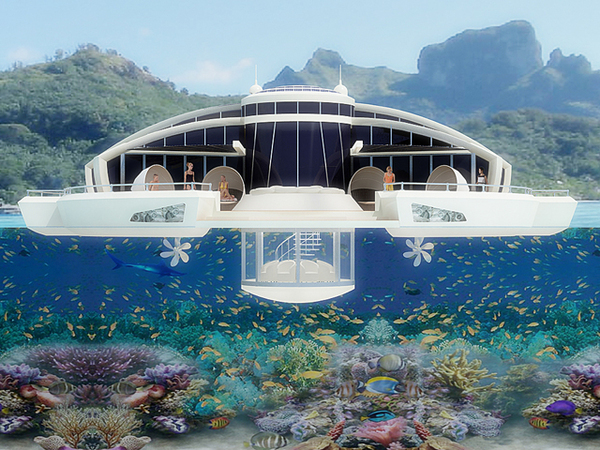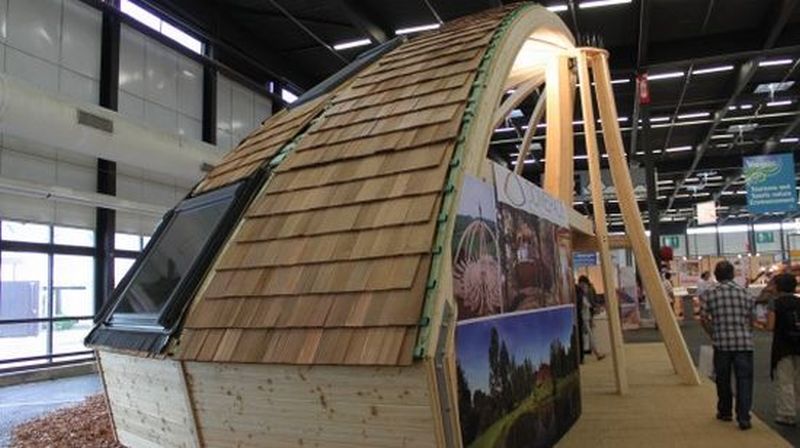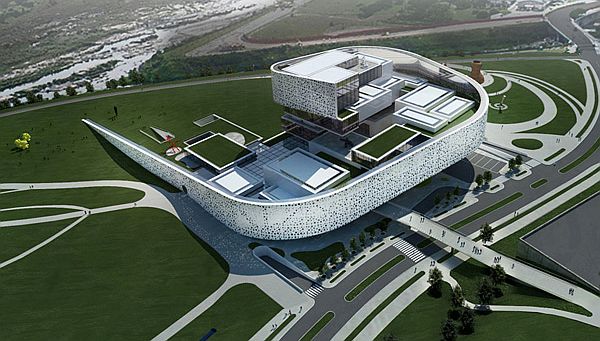The term hospitality has such a wide connotation that calculating the ambit of its scope sometimes seems difficult. The Solar Floating Resort is exemplary of the progression science and design have together achieved. It is an all in one structure, encompassing features of a yacht and submarine and is totally self sufficient, non polluting and in sync with the surroundings. The observation bulb at the bottom gives an added allure as you can be live audience to the marine life with fishes, dolphins and sharks swirling in the waters.

The resort will set high standards for beach resorts of the future. Designed for six people, it will be 20 meters in length and will be connected to a front beach hotel, allowing multiple installations. It will accommodate two single and two double bedrooms with attached bathrooms to be complete with a kitchen, a lounge area and pilot room. The most remarkable feature of the resort will be the completely submerged observation bulb, with six armchairs enclosed within a thick glass chamber.
It will be a modular structure that will be assembled on site. The SRF will comprise of a central tower and 32 modules will be attached to it for making the main deck. 20 more modules will make the habitation part. These modules have been constructed using composite balsa reinforced fiberglass. It is lightweight with high structural performance and therefore most suitable for the modularity. The structure is a two skin structure with photo electro chemical cells integrated into both the inside and the inside and the outside skin. The purpose for the dual skin is that the outside skin will absorb the sunlight and the inside skin will absorb the artificial light from inside. The insulation in between will help maintain the temperature inside irrespective of the outside conditions.
The photo electro chemical cells will supply power for both the photo electro chemical cells as well as for the propulsion system that will take it to nearby reefs. There is a light absorbing dye in the photo electro cells that absorb and transform light into electricity. These dyes are chlorophyll based and work on the chemical process of artificial photosynthesis. The electric current produced is stored in batteries and an inverter converts the direct current (DC) into alternative current (AC).
Integrating both solar cells and vacuum insulation into lightweight modules, while retaining the aesthetic appeal and also keeping it ecological and non polluting is not an easy task. Harnessing solar energy is common, but recycling the energy from artificial lights is a new concept and will be a breakthrough if successful.
Via: Behance




